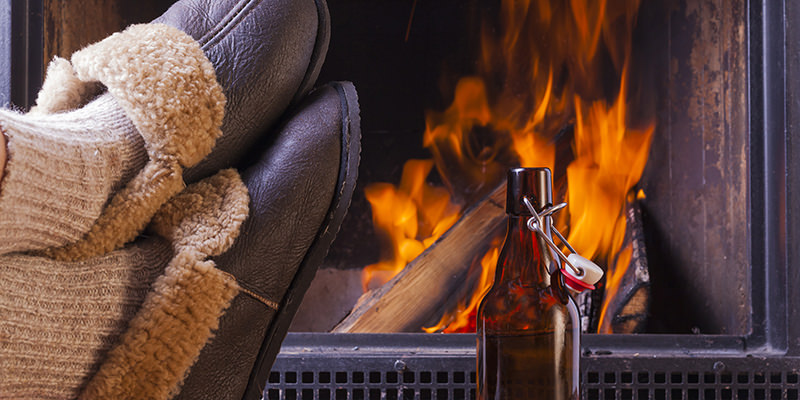The jury’s still, well, out on pumpkin beer (OK, there’s a seasonal backlash, everyone hates them except for a few of us, let’s move on). But even if we still wanted to make up our minds, there’s no time—like Duane Reade piling the Ferrero Rocher high on Thanksgiving weekend, the beer world has moved on to the next marketable holiday. Say (expletive) goodbye to pumpkin beer and hello to winter warmers.
Except, what the (expletive) is a winter warmer? Really, the whole slew of winter and holiday season ales doesn’t fall into one easily definable category—one “Christmas Ale” might taste remarkably different from another, and that’s likely because winter warmers and their ilk have roots in everything from older English ale to spiced Wassail, and have even morphed just a bit with the outsize creativity of the craft beer movement. (If you think about it, the most seasonal thing to drink of all might be a hyper-hopped West Coast IPA—nothing like a Christmas tree in a glass to usher in holiday cheer.)
But the world of winter warmers is both reasonably small and reasonably–spice preferences pending–inoffensive. In truth, no categorical definition exists, but trends emerge. Per the Beer Judge Certification Program, connections exist to British Strong Ale (bread and toffee malt, earthy English hops, moderate to high alcohol) and Winter/Christmas seasonal ales, which, yes haters, tend to incorporate some cookie spices.
In fact, if you want to know the whole horrifying holiday gamut permissible in your winter warmer, the BJCP’s guidelines for “Winter Seasonal Beer” include “Christmas cookies, gingerbread, English-type Christmas pudding, evergreen trees, or mulling spices. Any combination of aromatics that suggests the holiday season is welcome.” Terrifying, yes, but again, we’re not really opening up a spice rack and dumping it into beer this season. The BJCP will “allow for brewer creativity as long as the resulting product is balanced and provides some spice presentation.”
And even that isn’t the end of the story. Not all winter warmers will be spiced, and those that are tend to be deeper and richer in flavor—meaning, unlike with many pumpkin beer styles, the spice won’t pounce onto your tongue and prance around while a Jack-o-Lantern does a jig with a pumpkin pie. The spices of most winter warmers are basically playing the old school role they used to—a stand-in structural component prior to the age of hops, playing into, yes, but also drying out malty sweetness. Think of the way clove or cinnamon hits your tongue: an immediate sense of sweetness followed by an almost palate-cleansing, pleasant astringency.
The majority of winter warmers and holiday ales will generally feature, or else not play down, maltiness. It might be ruddier or lighter, depending on how much spice or hop the brewer ultimately wants to poke through to the surface, or it might get toasty, chocolatey, dark and rich. And while you might also find some winter warmers that go a bit hop-heavy, even beers with names like “Hoppy Holidays” from The Pike Brewing Company tend to give hops a slightly more supporting role.
Given the range of flavors at play, smarter breweries will make sure you know what’s going on in their winter warmer (or “Festivus Ale,” “Jubelale,” “Full Sail Wassail,” etc.). One thing you can fully take for granted: there won’t be even the slightest hint of the dreaded orange gourd.

